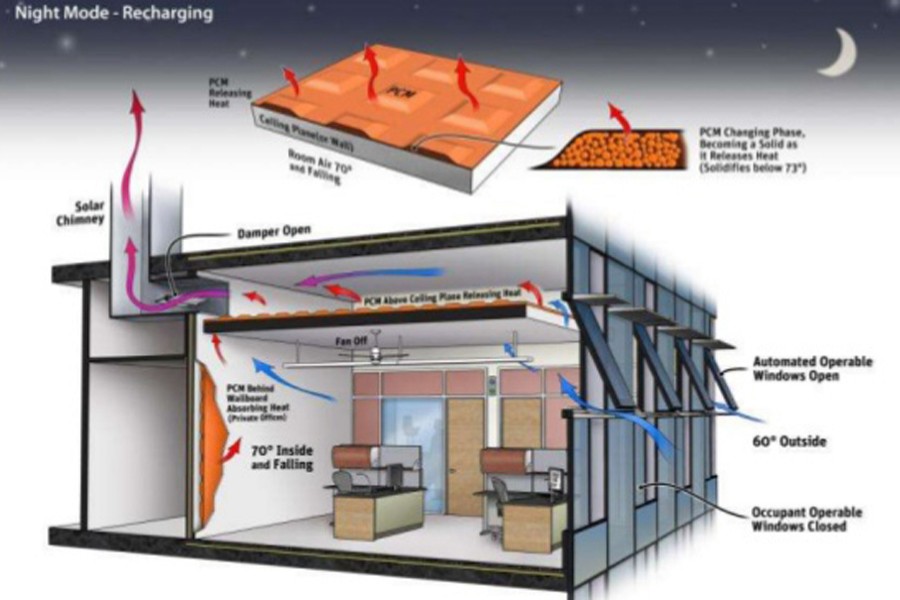Engineers from two American universities developed a kind of natural air conditioner with almost no consumption of electricity.
The study published on Friday in the journal Joule described the innovative water-cooling system capable of providing continuous day-and-night radiative cooling for structures.
The low-cost hybrid organic-inorganic cooling material is scaled into a roughly 13-square-meter array, small enough to fit on most rooftops, according to the study.
The advance could increase the efficiency of power generation plants in summer and lead to more efficient, environmentally-friendly temperature control for homes, businesses, utilities and industries.
"You could place these panels on the roof of a single-family home and satisfy its cooling requirements," said Zhao Dongliang, the paper's lead author and a postdoctoral researcher in Colorado University Boulder's Department of Mechanical Engineering.
"As Earth's temperature warms due to the absorbed heat from the sunlight during the day, it continuously emits infrared light to the cold universe all the time," said Professor Yang Ronggui at Colorado Boulder and lead author of the study. "During the night, Earth cools down due to the emission without the sunshine."
The film-like material reflects incoming almost all sunlight while still allowing an object's stored heat to escape as much as possible, keeping it cooler than ambient air even in the midday sun.
It can be produced at low cost using the current roll-to-roll manufacturing techniques, according to the researchers.
"We can now apply these materials on building roof tops, and even build large-scale water cooling systems like this one with significant advantages over the conventional air conditioning systems, which require high amounts of electricity to function," said the paper's co-author Tan Gang, associate professor at the University of Wyoming's Department of Civil and Architectural Engineering.
The researchers tested their system outdoors in a variety of weather conditions, including wind, precipitation and humidity, reports Xinhua from Washington.
In experiments conducted in August and September 2017, a module with a container of water covered by the material rendered 6.67 Celsius degrees cooler than the ambient air between 12:30 pm and 3:00 pm, the most intense summer sunlight of the day.
"We have built a module that performs in real-world, practical situations," said Yang. "We have moved quite far and fast from a materials level to a system level."


